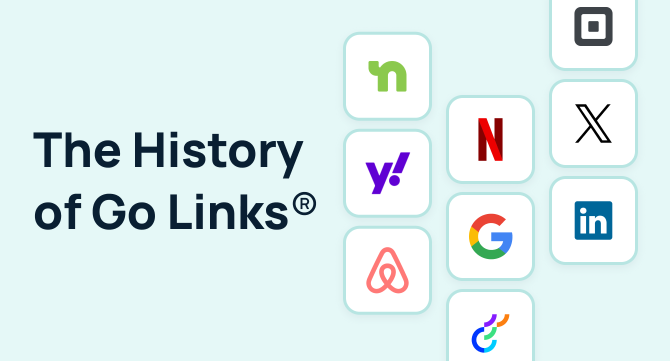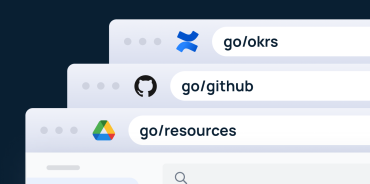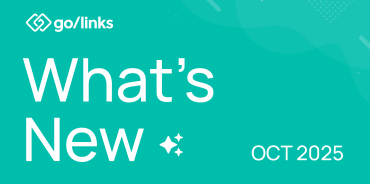Internal short links (aka go links®) have been around since the early 2000s and have matured and adapted drastically in the past 18 years, migrating their way into the tech industry.
What is a go link®?
It’s essentially a memorable short link that’s easy to type into your browser for instant access to any resource.
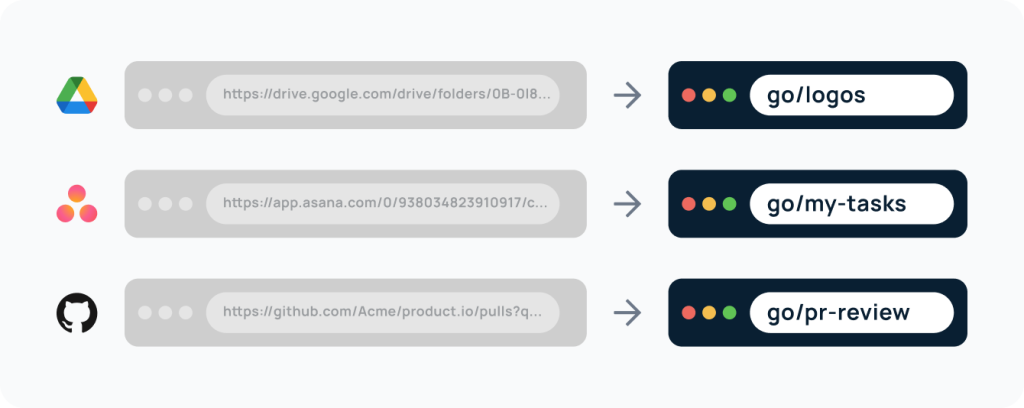
In this article, we’ll give you a quick overview of the history of go links, including:
- Internal go links at Google
- Internal go links at NCSU
- Yo links at Yahoo
- The first SaaS version
- The first go links app
Go links history timeline
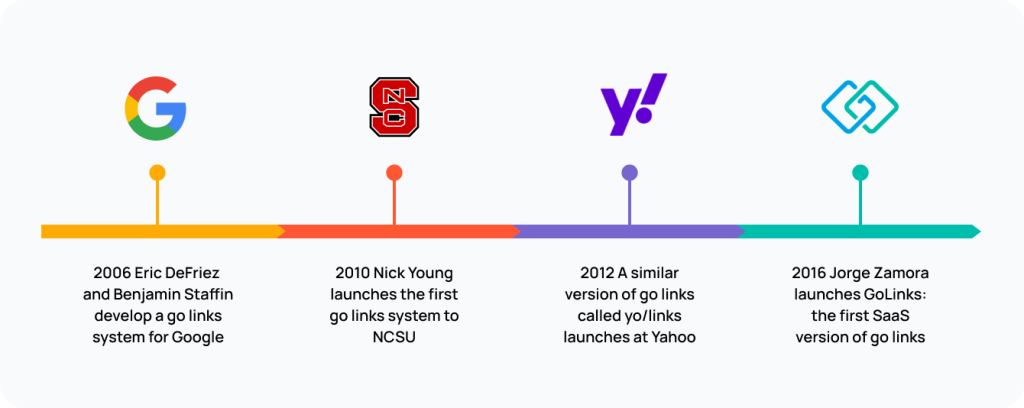
2006: Internal go links at Google
In 2006, Eric DeFriez and Benjamin Staffin worked together at Google and identified the need for a solution like go links®. They often received requests to create shortcut URLs, and to make things easier, they wanted to create an internal solution that all employees could use.
Eric created a similar go link system, which brought in the use of the “go/” domain and enabled Googlers to easily access links by typing “go/link” in their browser. Benjamin compared this go links system to AOL keywords used on the corporate network.
By the end of 2006, they had finished and launched the first internal go links application at Google. The app quickly became a key component of the Google ecosystem, with widespread use for sharing links within the company.
2010: Internal go links at NCSU
In 2009, another internal version of go links was emerging at North Carolina State University. Nick Young, who worked in IT, wanted to make it easier for the student body to share resources in classrooms, posters, emails, social media, and more.
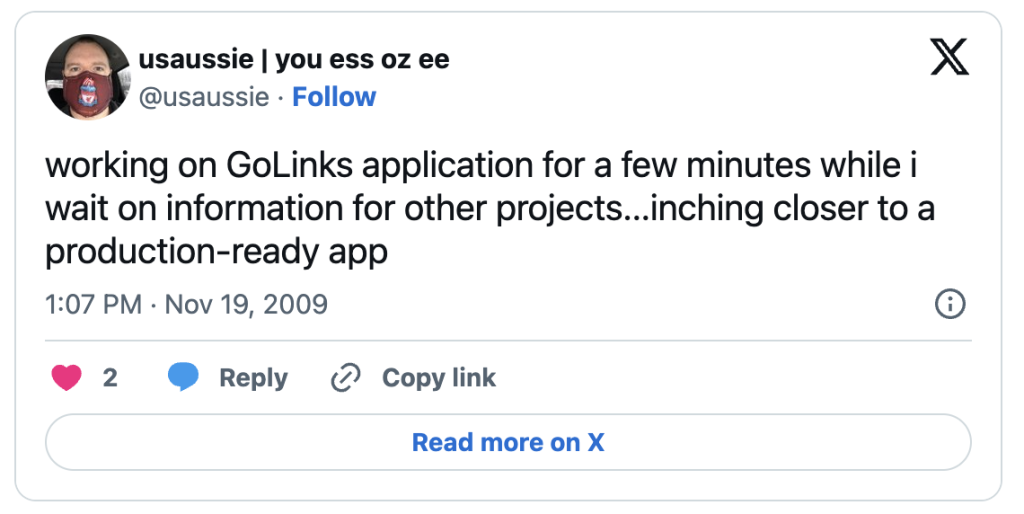
Nick developed his own short link system and released the final version to NCSU on October 10, 2010.
2012: Yo links at Yahoo
In 2012, when Marissa Mayer left Google to become the CEO of Yahoo, a similar go links application popped up at Yahoo, but with a twist: yo/links.
From 2012 to 2015, as more people left Google to join other tech companies, they realized just how important a short link application was to completing everyday tasks. Soon the internal application started showing up all around Silicon Valley as engineers built similar systems at:
Linkedin, Twitter, Square, Netflix, PayPal, Stripe, Airbnb, Optimizely, Mixpanel, Nextdoor, and more.
2016: The first SaaS version of go links
In 2014, Jorge Zamora worked at Yahoo. As he began visiting friends at other tech companies in Silicon Valley, he noticed that they had the same thing: go/links. The links would be posted in the cafeterias, break rooms, and hallways; you couldn’t miss them.
Each application was usually built by an engineer inside the company and served the simple purpose of redirecting URLs.
Jorge saw that these applications could be improved significantly and made available to the public: GoLinks as a Service. So he reached out to some old college friends, started a team, and began working on his own GoLinks system. He wanted to create something that would be available to any company, not just tech giants.
On August 29, 2016, he released the first SaaS version of GoLinks®.
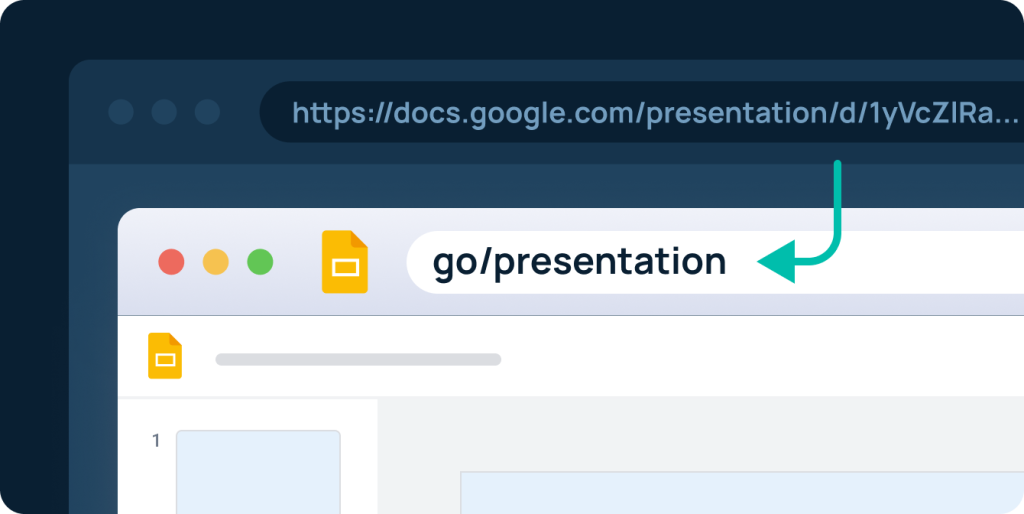
This application was more than just a basic redirect system. It could be set up for a whole company in a matter of minutes—no software installation needed. All you had to do was install the extension in any browser, and go links were there to use whenever you needed them.
This tool empowered anyone, not just engineers, to easily implement a golinks system at their own company. With go link features like a Slack application, browser quick search, on-page creation, NLP suggestions for misspelled links, DNS public, and private entries, and Single Sign-On solutions, this would become the single choice for enterprise clients choosing a golinks solution.
Since then, similar short link tools built by individuals have popped up here and there. These are usually open-source projects that involve a lot of setup, knowledge of installing applications, and limited support.
2022: The first go links® mobile app
By 2022, GoLinks Inc. had grown to a mid-sized company with hundreds of customers like Asana, Moderna, Rokt, and Checkr using the product. With this momentum, they launched the first go link mobile application.

Remote work changed how we work, and people aren’t just at their desks all day. This app allowed employees to securely access work resources, anytime and anywhere.
Get started with go links
There you have it—the full history of go links. If you’re interested in trying out this tool yourself, head to https://www.golinks.io/ and see why the go link is quickly becoming the most valuable productivity tool in Silicon Valley.
Access and share resources instantly with GoLinks
Try for free
